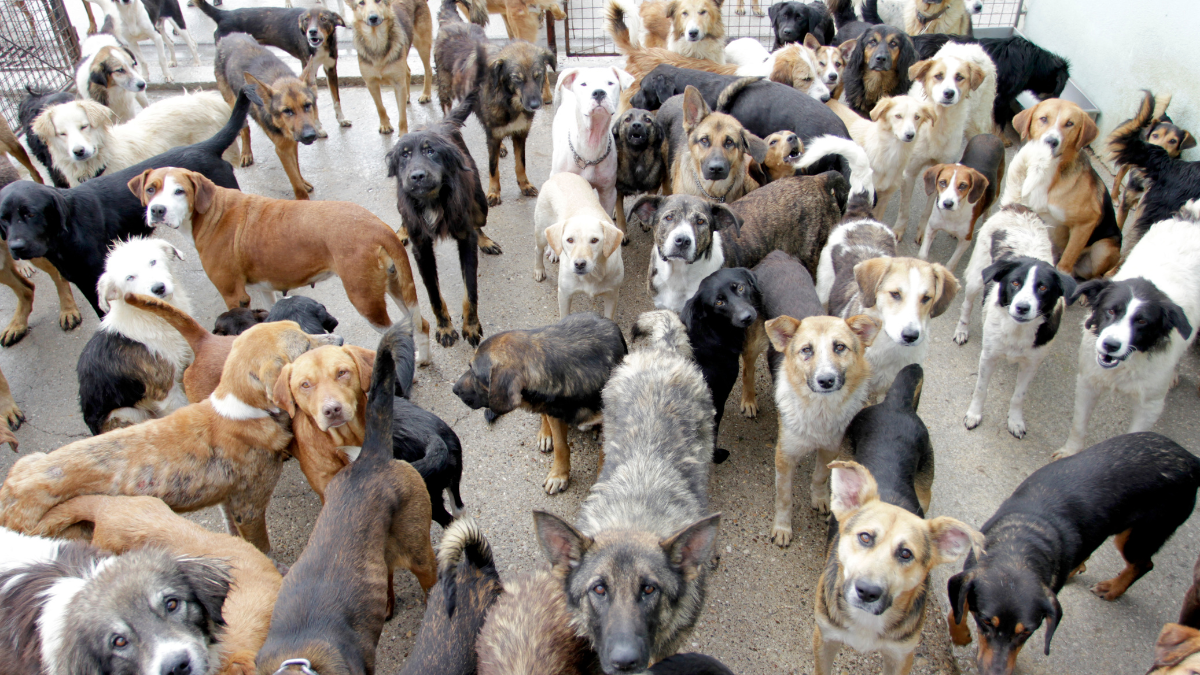You might not be aware, but there are more than 340 dog breeds recognized by the World Canine Organization. That’s a lot of dogs, isn’t it? Each breed is unique, possessing its own set of characteristics, behaviors, and physical attributes. They range from small, fluffy lap dogs to large, muscular working dogs.
But what exactly distinguishes one breed from another? And how can understanding these differences enhance your relationship with your canine companion?
Stay with us, as we’re about to embark on a journey exploring the diverse world of dog breeds.
Small-sized dog breeds
When you’re considering a smaller companion, it’s essential to remember that small-sized dog breeds pack a lot of personality into a tiny package. They can be as energetic, loving, and protective as their larger counterparts. You don’t have to compromise on companionship just because you’ve chosen a smaller breed.
Perhaps you’re drawn to the feisty, playful nature of the Dachshund or the French Bulldog’s affectionate, easy-going demeanor. Maybe it’s the Yorkie’s loyalty or the Chihuahua’s spirited character that piques your interest. Each small breed offers unique traits that cater to different lifestyles and preferences.
However, it’s not all fun and games. Small breeds require just as much care, if not more, than bigger dogs. They may demand more attention and be more prone to certain health issues. You’ll need to invest time in training and socialization, and regular vet check-ups are a must.
Medium-sized dog breeds
If you’re looking for a pet that’s not too big, yet not too small, medium-sized dog breeds might be just what you’re after. They’re the perfect balance, offering the robustness of a large dog and the cuteness of a small one.
Breeds like the Beagle, English Springer Spaniel, and the Bulldog fall into this category. Beagles are known for their friendly disposition and keen sense of smell. They’re great with kids and make excellent family pets.
English Springer Spaniels, on the other hand, are energetic and love outdoor activities. They’re perfect if you’re an active person who enjoys walks or runs.
Then, there are Bulldogs. Don’t let their tough exterior fool you; they’re gentle and incredibly loving. Bulldogs are great companions and are known for their loyalty.
Medium-sized dogs are generally easier to train than smaller breeds. They’re also less prone to certain health issues that afflict larger dogs. However, they still require regular exercise and mental stimulation to stay happy and healthy.
Large-sized dog breeds
Shifting gears to large-sized dog breeds, you’ll find these gentle giants are known not only for their size but also for their unique characteristics and diverse personalities. You’ll be amazed by the combination of their physical power and often calm, loving nature. Large dogs like Great Danes, Saint Bernards, and Mastiffs may seem intimidating due to their size, but they’re often friendly, loyal, and protective.
While they may need more space and food, their love and devotion can be well worth it. Here’s a table to give you an idea of their characteristics:
| Breed | Personality Traits |
|---|---|
| Great Dane | Gentle, Friendly, Confident |
| Saint Bernard | Loyal, Gentle, Caring |
| Mastiff | Brave, Loyal, Calm |
Working dog breeds
Moving from large breeds, let’s now explore the world of working dog breeds, which are remarkable for their intelligence, strength, and trainability. These breeds are often employed in roles such as search and rescue, police work, and service assistance.
Among these, you’ll find the intelligent Border Collie, known for its exceptional herding skills. The strong, courageous Boxer often serves in police and military roles, while the adaptable Labrador Retriever excels as a guide and service dog. You’ve probably heard of the Saint Bernard, famous for Alpine rescues. And let’s not forget the Siberian Husky, a sled-pulling champ in the coldest climates.
Working dog breeds usually require plenty of exercise, mental stimulation, and training. Their intelligence and energy can be misdirected if not properly channeled. Remember that these breeds aren’t just about work; they’re also about companionship. They’re loyal and love their human families.
If you’re considering a working breed, make sure you’re ready for the commitment. They’re not the best choice for a passive owner or a sedentary lifestyle. But if you’ve got the time and energy, they can be an incredible addition to your life.
Non-Working dog breeds
Diving into the realm of non-working dog breeds, you’ll encounter a diverse array of dogs bred primarily for companionship rather than specific tasks. These dogs, often referred to as ‘companion’ or ‘toy’ breeds, aren’t bred to herd sheep, pull sleds, or guard property. Instead, they’re bred to be friendly, sociable, and great for families.
Among the myriad of non-working breeds, you’ll find the Shih Tzu, known for its friendly demeanor and luxurious coat. The Bichon Frise, with its cloud-like fur and playful nature, is also a favorite. Don’t forget the Pomeranian, a tiny dog with a big personality.
To better understand their traits, let’s consider this table:
| Breed | Characteristic |
|---|---|
| Shih Tzu | Friendly, Luxurious Coat |
| Bichon Frise | Playful, Cloud-like Fur |
| Pomeranian | Tiny, Big Personality |
Each of these breeds has unique qualities that make them perfect for companionship. They may not have a job like working dogs, but they’ll certainly work their way into your heart. So, if you’re looking for a furry friend over a farmhand, a non-working breed might just be your perfect match.
Conclusion
In the end, you’d be barking mad not to consider the size and work-orientation when picking a pooch. From petite pups to giant hounds, from hardworking heroes to laid-back loafers, the world of dogs is as vast as the universe itself. Remember, choosing the right breed can make your life a joyous romp in the park or, without proper thought, a howling disaster.
So, don’t just fetch any breed, let your choice be as unique as you are!
Frequently Asked Questions
What Are the Health Concerns Specific to Hybrid Dog Breeds?
You’re asking about health concerns for hybrid dogs. They’re susceptible to the health issues of both parent breeds. Common problems include hip dysplasia, eye diseases, heart problems, and certain genetic conditions. Each breed’s risks vary.
How to Determine the Correct Portion Size for Different Dog Breeds?
You’ve got to consider your dog’s age, breed, weight, and activity level. Smaller breeds need less food than larger ones, but it’s not a straight scale. Check the dog food’s recommended portion size too.
Are There Any Specific Grooming Needs for Rare Dog Breeds?
Yes, rare dog breeds often have unique grooming needs. You’ll need to research your specific breed’s requirements. Some need regular haircuts, others special shampoos. It’s essential to keep them healthy and comfortable.
What Are Some Unique Behavioral Traits of Ancient or Primitive Dog Breeds?
Primitive pups possess peculiar properties. You’ll find they’re typically more independent, alert, and territorial than other breeds. They’re often harder to train due to their strong instinctual behaviors inherited from their wild ancestors.
How to Train Dogs for Specific Tasks Like Search and Rescue or Therapy?
You’ll need to understand your dog’s natural abilities first. Then, focus on obedience training. Gradually introduce task-specific commands. It’s essential to be patient, consistent, and reward good behavior. Consider hiring a professional trainer for specialized tasks.







